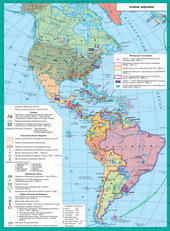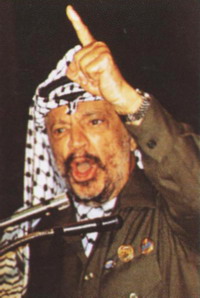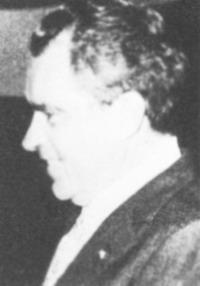§9. European integration
1. Background and MilestonesEuropean integration
The idea of a united Europe held viewsEuropean politicians for a long time and only in the second half of the twentieth century.it there came a grievous its practical implementation. Integrationcreatures can not be a political will necessary for its developmentcertain prerequisites.
Table.: Prerequisitesformation of a united Europe
|
Civilization
|
Economic
|
Historical
|
Military and political
|
Geopolitical
|
|
The presence of common spiritual values, the compatibility of social and political ideals
|
Opportunity complementary economic and scientific-technical development
|
Traditional interaction mutual respect. The traditional desire for unity (violence or voluntary)
|
Privity with major international issues, cooperation in military and military-political alliances, the settlement of territorial disputes
|
Development Opportunity economically efficient transportation network
|
European integration is a visualexample of vertical integration, which has several aspects: economic,political, military. It is actively developed since the early 50's. Itsbeginning implementation of the Marshall Plan ended. In April 1948 createdOEEC (OYEES), which in September1950 was supplemented by the European Payments Union (ENP), which in1961 replaced the Organization for Economic Cooperation and Development(OECD).
The transition from simple internationalEuropean cooperation to a real supranational communitystarted on May 9, 1950, when Robert Schuman made a motion,unveiling a plan developed by Jean Monnet, to create industry associationsix countries (France, Germany, Italy and the Benelux countries), the European associationCoal and Steel Community (ECSC). Novelty of this association was to create a Europeangoverning body independent of Government.
The next step was the creation in 1925March 1957 European Economic Community (CommonMarket ") and the European Atomic Energy Community (EAEC), or"Euratom".
Treaty of Rome 1957
Determineddetermined to lay the foundation for closer union between European nations;
Determineddetermined to provide the joint actions of economic and social progress of itsby countries remove barriers that divide Europe;
Puttingthe main goal of its efforts in continual improvement of their life and worknations.
Recognizingthat the elimination of existing barriers, requires the need for concerted efforts toguarantee stability, economic growth, equitable and fair tradecompetition;
Anxious to strengthenUnion economies and ensure their harmonious development by reducing the gapbetween different regions and Delays
countries that are in worse;
Wantingpromoted through common trade policy of gradual removal of restrictions oninternational trade;
Wantingconfirm the solidarity which unites Europe and countries in other continents, andDesiring to ensure the development of their prosperity, in accordance with the UN Charter;
Determineddetermined to strengthen, through the implementation of that complex, peace and freedom andencouraging other nations of Europe who share these ideals to join theseefforts;
We decided to create a European Economic Community.
The purpose of EU- Promote the development of national economies and protect Europe fromdominance of American capital. Membership in EU is the elimination of unprofitableenterprises and government subsidies. Participating countries jointly develop economicpolicy, inter-state projects, customs tariffs and regulate the financial system,establish a system of international expertise to ensureprofitability, create a single market work.
In the second half of the 60'sis an association structures ECSC, EEC, Euratom to provide a singleInstitutions (Council, Commissions, and the Court, etc.). In 1968 it formed a single customs union.
Furtherdevelopment of the EU goes through deepening economic and political integration(Maastricht Treaty establishing the European Community, 1992).
The process of formation of EEC was longand accompanied by a crisis caused by structural changes ineconomies, the process of elaboration of a system integration.
It was a lot of opponents and the EEC. Yesin 1960 as opposed to "common market" Britain createdEuropean Free Trade Association, which includes Britain, Sweden,Norway, Denmark, Switzerland, Austria and Portugal.
In the 60 years between the EU and EFTAbroke sharp competition. In this fight got EECvictory: in ten years (1960-1970) share of EU in the worldproduction increased from 26% to 32%, while the share of EFTA decreased from 16.5% to15%. As a result, the EFTA disintegrated, and its members one by one beganmove to UES, the first of these was the United Kingdom itself.
In the 70 years to join EUBritain, Denmark, Ireland. In the 80's - Greece, Spain and Portugal.
The transition from confrontation toCooperation of the world, the end of the Cold War (the second half80 - 90 years), gave new impetus to integration processes in Europe.They have evolved in two directions: the deepening of integration processes andEU enlargement (to attract new members by the Central, North,Eastern Europe.
In 1987 EU members have entered into force"Single European Act" which eliminated the obstacles ineconomic cooperation, creating a unified tax system, abolisheddifferences in their laws. In addition, EU countries in May 1992entered into an agreement with the European Free Trade Association (EFTA) on the formationEuropean Economic Area (EEA). Here freely move capital,products, services and labor. February 6, 1992 in Maastricht(Netherlands) EU member states signed the agreement on which of January 1, 1993started functioning single market. Then the treaty came into forceEuropean Union (EU), on which in 1999 culminated in asingle currency area - instead of national currencies is entered only"European currency unit - euro. Communityplans to develop a common defense policy and introduce a single Europeancitizenship. So, has formed the European house, which governEuropean Council, EU Council, European Commission, European Parliament, European Court.
|
|
Content
|
|
Free Zone Trade
|
Cancel duties. Quotas and other restrictions on trade among the participants at maintaining their autonomy in customs and trade policy with regard to third countries
|
|
Customs Union
|
The introduction of joint external tariff and the transition to a unified trade policy third countries
|
|
Single internal (common) market
|
Customs Union plus the implementation of measures ensuring free movement of services, capital and labor (including the freedom of their professional activities).
|
|
Economic and Monetary Union
|
Single plus internal market harmonization and coordination of economic policies States Parties on the basis of joint decision-making and control over their performance, the replacement of national currencies only. A single currency and monetary politics
|
SuccessesEuropean integration have made the EU attractive to other European countries. 1January 1995 Sweden became EU members, Finland and Austria. However, referendums inNorway and Switzerland have given preference to the forces that opposed joining the EU.
At the EU summit inAthens in April 2003 made a decision on granting the Union an additional 10new members, among whom were three former Soviet republics.
In 2003, The EU adopted the conceptrelations with neighboring countries. Also began consideration of the EU Constitution. Butall attempts to accept it and had success.
|
Year of entry into EEC (EU)
|
Countries
|
|
1957
|
France, Germany, Italy, Belgium, Netherlands, Luxembourg
|
|
1973
|
Britain, Denmark, Ireland
|
|
1981
|
Greece
|
|
1986
|
Spain, Portugal
|
|
1990
|
After joining Germany, East Germany (former GDR).
|
|
1995
|
Sweden, Finland, Austria
|
|
2004
|
Estonia, Latvia, Lithuania, Poland, Czech Republic, Hungary, Slovakia, Slovenia, Malta, Cyprus (Greek part)
|
|
2007
|
Romania, Bulgaria
|
2. EU Institutions
European Council.
Operates since 1974 in1986 status legitimized by the Single European Act. By Councilthe heads of state and head of EU governments and the President of the EuropeanCommission. European Council "gives the Union the necessary impetus for the development and definesgeneral political orientation. " Meets twice a year. At meetingsdiscussed the overall situation and major problems of the Union and state of the worldEconomy and International Relations, defines priorities,accept applications and decisions of strategic importance. Occurunscheduled meetings to discuss one issue that needsimmediate political solution. ER for the outcome of discussions takes political documentwhich is transformed into acts and decisions of relevant bodies of the EU.
Council of the European Union (CouncilMinisters)
Supreme legislative body of the EU. He has the right todecision making, and provides overall coordination of general economicpolicy, manages the budget (together with the European Parliament) concludesinternational agreements.
EU Council consists of representativesstates - states of the EU. In fact there are 30 councils involvedspecific activities of the EU and unite the nationalMinisters. Chairman of the Board is elected by one to six months.
European Commission
The EU executive. Enjoyedright of legislative initiative, is developing legislation and directs themfor consideration by the Council, controls the legislative process, monitors the applicationof legislation in the event of breach applies sanctionssending the case to the Court. In addition, the Commission is authorized to makesolutions in areas such as agriculture, trade, competitiontransport, functioning single market, environmental protection;manages budget and EU funds, is responsible for budget costs.
The Commission consists of representativesEU Member States (maximum 27), who are appointed for a 5-year nationalgovernments, but completely independent in the performance of their duties. NominationsEuropean Parliament approves.
The Commission consists of generalGeneral and more than 20 managing directors responsible for individualactivities of the EU. General staff officers of the Commission - more than 15 thousand people.
European Parliament
Originated in 1974,when French President V. Giscard d'Estaing put forward the idea of aEuropean Parliament - the political body to perform advisoryfunction in formulating general principles of social policy (most importantly -human rights). First, European national parliaments have delegated theirrepresentatives were subsequently conducted general direct elections toparty basis (since 1979). After the signing of the Maastricht agreementThe European Parliament has become an important EU institutions.
European Position:consults and supervises the activities of other EU institutions;approves or amends the legislative acts, EU budget, approve budgetEU enters into interstate agreements. Number of Parliament shall not exceed732 people. The number of members depends on the size of the population. Termdeputy powers 5 years. MPs divided by 20 commissions, which are in chargeimportant areas of EU activity.
The Court of European Communities
The Court providesuniform application and interpretation of EU law throughout its territory. The Court considersall issues that arise during the implementation of EU law. The decision of the Courtappealed. Court jurisdiction does not extend to the overall foreign policies of theEU security policy and cooperation of Member States in the field of justice andInterior. The Court comprises 15 judges (to 25) and 9 legal advisors,appointed by governments for 6 years, independent in fulfilling itsduties. In 1989 to assist the Court created the Court of First Instance. Whichconsider claims of individuals for EU institutions and others.
I wonder
Symbolism CE and EU
Since its inception, the Council of Europe has alwaysEurope felt the need to provide characters with which each of its inhabitants couldidentify themselves. October 25, 1955 Parliamentary Assembly of Council of Europe decidedunanimous decision to elect as its emblem a symbol of the circle with the blue field on whichRepresented gold star.
December 8, 1955 Council of ministersendorsed this proposal and adopted the European flag: a circle of gold refined instars on a blue background. It means unity, but they themselves will star symbolizepeoples of Europe, the number "12" (the number of stars, and this number only) representsindivisibility and perfection. A 1985 at a meeting in Milan was achieved CEagreement that the proposal is accepted the Committee on ethnicEurope on the EU's own flag - the flag, approved by CE in1955 Since 1986 EEC uses this flag as the official symbols.Thus in the CE and EEC (EU) single flag. Besides the CE has its own flag,which indicated symbols added letter "S» - Council (ie Council).

FlagEuropean Union
European anthem was adoptedCouncil of Europe in 1972, which is a prelude to "Ode of Joy" from Nine yatoyiBeethoven Symphonies arranged by Austrian musician and conductor Herbertvon Karajan. As you know, the word for "Ode joy once wrote FriedrichSchiller. However, to avoid arguments about which language should be heard wordshymn, it was decided to abandon words.
The motto of the EU issaying: "One in diversity".
In addition to these structuresfunction: The Economic and Social Committee, Committee of the Regions, the ChamberAuditors (Accounting Chamber). At present there is the issue of electionPresident of the EU approval of the EU Constitution (2004).
Military Integration in Europecarried out in the Euro-Atlantic institutions - NATO, WEU and the EU.
In 1993, at a conference inMaastricht it was decided that EU countries should develop "commonpolicy on defense and security. " The basis of this policy should be called"Goals Petersberha" taken the WEU. This document defined the purpose for whichEuropeans can unite the efforts of war (humanitarian, peacekeeping actions, etc.)rescue civilians during military conflicts and terrorist attacks,solving crises. After the Kosovo war in 1999 EU countries have realized theirgap in military capabilities the United States. Finally, on the SummitHelsinki (December 2002) decided to createEuropean Rapid Reaction Force to facilitate the creation of a Europeanindependent defense, in order that the EU was able to own without NATO, to conductoperations to control crises, peacekeeping and rescue operations. NumberRapid Reaction Force - 60 thousand soldiers, 400 aircraft, 100 ships.
3. Other EuropeanOrganization
Amonglarge number of European organizations except the EU should be noted OSCEunites almost all European countries and the CE.
The Organization for Security and Cooperation in Europe.
During detente in Soviet-Americanrelationship (70 years) started a movement of European peoples by strengtheninginternational cooperation. Countries expressed the desire of the European continentto the common principles of coexistence, cooperation, resolving conflicts and creatingon the basis of a new system of international relations. Their joint efforts in thisdirection are called "the European process. The main document thatidentifies ways of cooperation of European countries, the Final Act of the Conference on Securityand Cooperation in Europe (CSCE) (1975, Helsinki). January 11995 CSCE received another name - the OSCE (Organization for Security andCooperation in Europe, continuing body.) Extreme importanceDocuments of the Paris meeting (November 1990) the participating countriesEU-Charter for a New Europe, the Joint Declaration of 22 countries, the Treaty onConventional Forces in Europe, which is actually consistent principles of wardoctrines of international coexistence, mechanisms of European processes.
Council of Europe
Important structures in the developmentintegration process is the Council of Europe (present day unites 41 countries)main task is to protect human rights. Provides supervision ofhuman rights, makes recommendations, has the right to impose sanctions.
European regional organizations
|
S Name
|
Founded
|
Direction of
|
Member Organizations
|
|
NATO (North Union)
|
|
|
U.S., UK, France, Germany, Canada, Italy, Belgium, Netherlands, Portugal, Spain, Greece, Turkey, Norway, Denmark, Luxembourg, Iceland, Czech Republic, Poland, Hungary, Romania, Bulgaria
Members of the Partnership for Peace Council ": Eastern Europe and CIS.
Distinctive Partnership: Ukraine, Russia
|
|
PAA (North Atlantic Assembly)
|
|
Coordination NATO activity in the interparliamentary level
|
Allies
|
|
NACC (Council North Atlantic Cooperation)
|
1991
|
Cooperation NATO to Central and Eastern Europe, Baltic and CIS
|
Allies, CIS, Baltic States, Slovakia, Romania, Bulgaria, Albania
|
|
EU (European Union)
|
1993
|
|
France, Germany, Italy, Belgium, Holland, Luxembourg, Britain, Denmark, Finland, Greece, Spain, Portugal, Sweden, Finland, Austria, Latvia, Lithuania, Poland, Czech Republic, Hungary, Slovakia, Slovenia, Malta, Cyprus (Greek part)
Associate members: Bulgaria, Romania, Turkey
|
|
ZES (Western Union)
|
1955
|
Coordination military-political activity in Western Europe
|
UK France, Germany, Italy, Belgium, Netherlands, Portugal, Spain, Greece, Luxembourg
Associate members: Turkey, Norway, Iceland
Observers: Denmark, Ireland
Associate partners: Hungary, Poland, Czech Republic, Slovakia, Romania, Bulgaria, Lithuania, Latvia, Estonia
|
|
CE (Council of Europe)
|
1949
|
Protection rights, and humanitarian problems of European security
|
Worldwide Europe other than Andorra, Vatican, Monaco
|
|
PR (North Council)
|
1952
|
Coordination political and economic activities of the Nordic countries
|
Norway Sweden, Denmark, Finland, Iceland
|
|
CEI (Central European Initiative)
|
1989
|
Coordination political and economic activities in Central Europe
|
Italy Albania, Belarus, Bulgaria, Hungary, Poland, Czech Republic, Slovakia, Slovenia, Croatia, Bosnia and Herzegovina, Macedonia, Moldova, Romania, Ukraine
|
|
(TSYEUVT, Eng. - CEFTA) Central European Free Trade Agreement
|
1993
|
Multilateral cooperation aimed at trade liberalization. Development of Free Trade Countries
|
Hungary, Poland, Slovakia, Czech Republic, Slovenia, Romania, Bulgaria
|
|
"Visegrad group "
|
1991
|
Coordination political and economic activity in Eastern Europe
|
Hungary Poland, Czech Republic, Slovakia
|
|
Organization of Black Sea Economic Cooperation (BSEC, Eng. - OBSEC)
|
1992
|
Support economic development, achieve stability and peace in the Black Sea pool. Become part of European cooperation
|
Albania Armenia, Azerbaijan, Bulgaria, Georgia, Moldova, Russia, Romania, Turkey, Ukraine.
Observers: Serbia and Montenegro, Austria, Germany, Egypt (wants to become a full member), Israel, Italy, Poland, Slovakia, Tunisia, France
|
|
OSCE (Organization for Security and Cooperation in Europe)
|
1975
|
Preparation conditions and confidence-building measures and security in Europe
|
U.S., Canada, all European countries (except for Andorra) and CIS
|
|
Pact Stability for South Eastern Europe
|
1999
|
Facilitate peace and strengthen democratic political systems in the region, restore their economy and support the free market, a gradual convergence peoples of the Balkan peninsula with the rest Europe.
|
About 30 European countries, international organizations, financial institutions and regional organizations
|
Results
The idea of a united Europe have repeatedly occurred inEuropean politicians ("United States of Europe", "Panyevropa", "Europeanhouse, etc.), but its actual implementation is found only in the second half of the twentieth century.After a difficult path of integration processes created the Europeans Union (EU)yaki actually operates, develops and provides ongoing development of allEurope. Advances EU made it attractive to other nations, especially withEastern Europe. Some countries seek to join, others followexample.
Questions and tasks:
1. What caused the deployment of active integration processes in Europe in the secondhalf of the twentieth century.?
2. What are the milestones in the formation of a united Europe can be identified? His responsejustification.
3. Define chronological romky each stage of European integration, and allowcharacteristic of him.
4. Describe the mechanism of functioning of the EU, give the description of itsbodies.
5. What causes enlargement to the East? Identify the implications of this process.
6. Name the major European institutions that function they perform?
 English
English



















